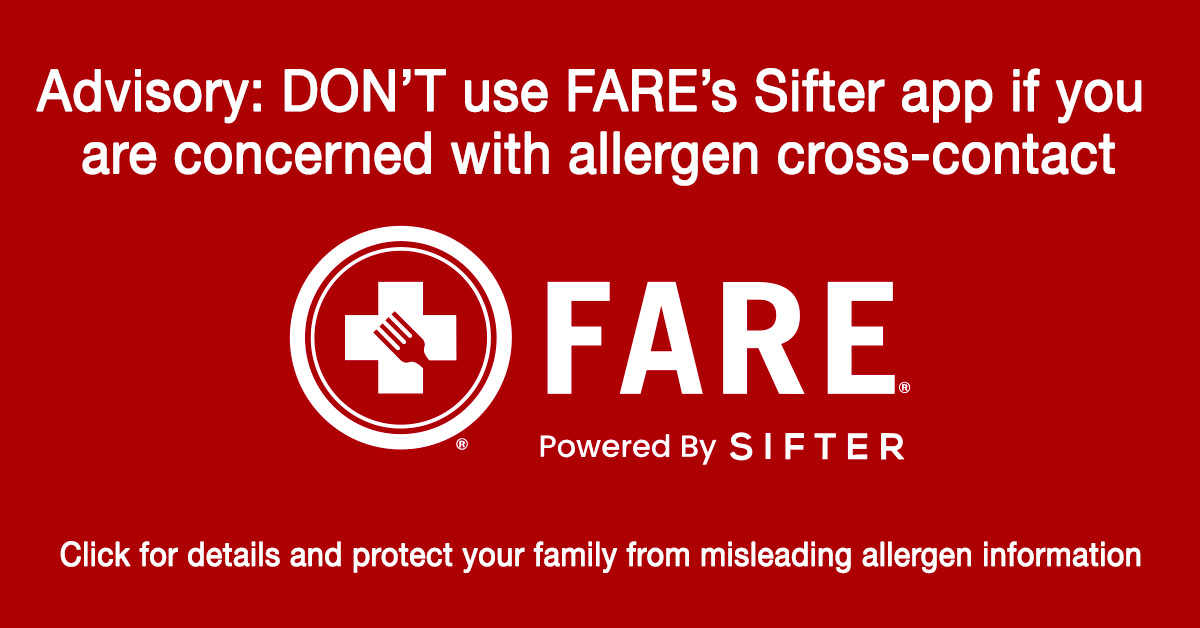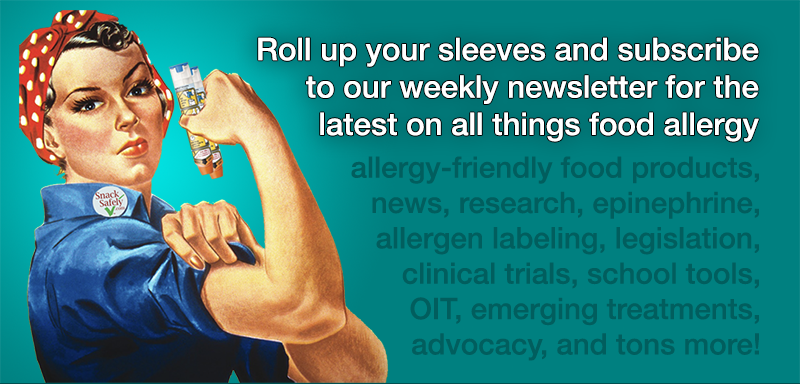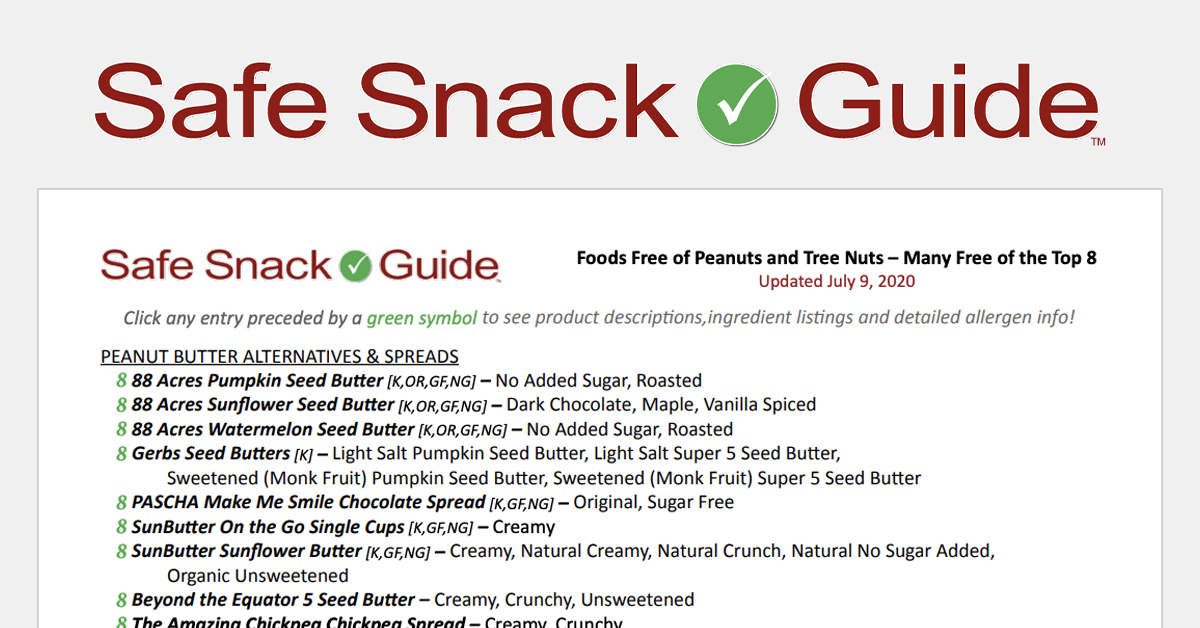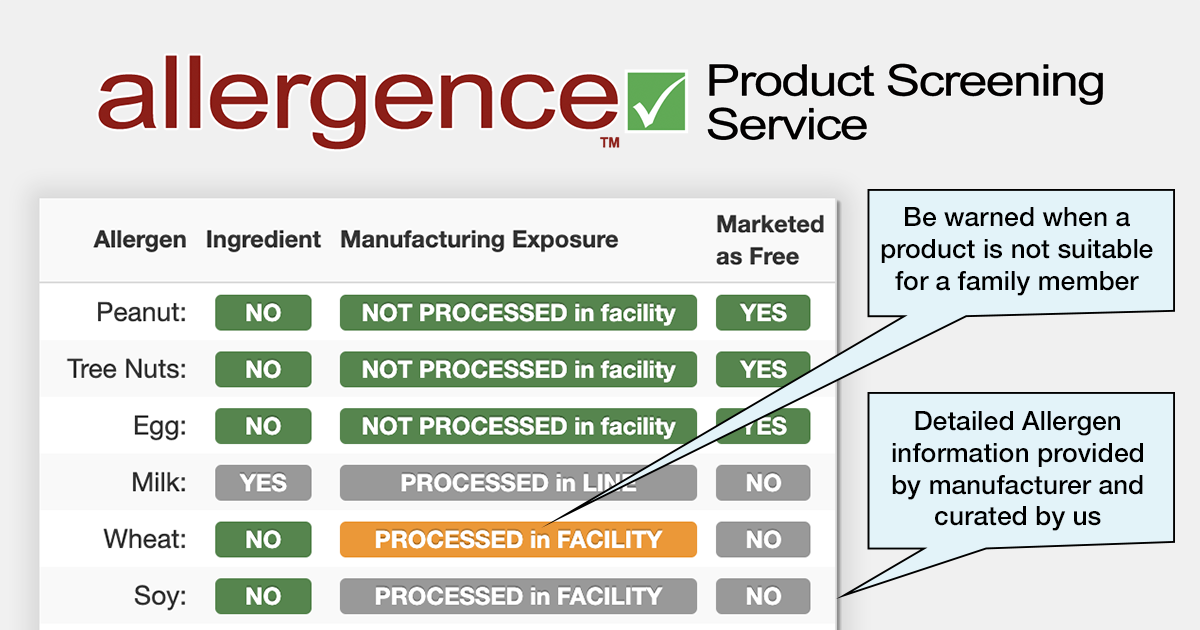Legislation known as the ADDE Act is pending in California’s legislature, led by 9-year-old Addie Lao, who has severe food allergies. She and her third-grade class appeared before the California Senate Health Committee hearing yesterday to advocate for the proposed new law, Senate Bill 68.

The bill would require restaurants to list all of the FDA’s Top 9 allergen ingredients present in each dish on their menus, providing information not currently available to diners with food allergies to help keep them safe.
The legislation is supported by most major food allergy advocacy organizations, including the American College of Allergy Asthma and Immunology (ACAAI), the Asthma and Allergy Foundation of America (AAFA), Kids with Food Allergies (KFA), the Food Allergy and Anaphylaxis Connection Team (FAACT), the Food Allergy Nursing Association (FANA), and many others. We at SnackSafely.com fully support the legislation as well and hope that similar measures are adopted nationwide.
The only major food allergy advocacy siding with the California Restaurant Association in opposition to the legislation is Food Allergy Research and Education (FARE).
In a statement to Sen Caroline Menjivar, Chair of the California Senate Health Committee, FARE CEO Dr Sung Poblete makes the following assertion:
By mandating a static, one-size-fits-all menu labeling system, the legislation could inadvertently create a false sense of security for food allergy guests — suggesting that menu labels alone provide full protection when they often cannot capture the complexity of restaurant operations, cross-contact risks, or frequent ingredient changes.
That is indeed a concern, but it is significantly outweighed by the need to provide allergen ingredient information to allergic diners, which they currently do not have access to.
What stands out is FARE’s complete turnaround regarding their concern for giving consumers “a false sense of security.”
In November 2022, FARE issued a press release announcing a partnership with Sifter endorsing their barcode scanning app:
Food shopping is a major challenge for more than 85 million Americans with food allergies and intolerances. Now, using Sifter’s robust, science-based shopping platform, food-allergic individuals and families can make better food decisions and save hours of time when grocery shopping. In addition, the platform is accurate and easy to use, giving peace of mind to those with even the most restrictive dietary challenges.
Before their announcement, I urged Dr Poblete not to endorse Sifter because it relied solely on ingredient lists and Precautionary Allergen Labeling (PAL) — information already available on the packaging — to warn consumers of the potential for allergen exposure. I asserted that the app bearing FARE’s seal would give consumers a false sense of security.
Here’s what I wrote:
The problem is that manufacturers are not required to list PAL warnings on their labels and many don’t, so consumers are left to call the manufacturer to determine whether a product is made on a line or in a facility where their allergen of concern is processed.
Given the voluntary nature of PAL warnings, apps that rely on them to provide consumers with shopping suggestions don’t have reliable insight into how products are manufactured. They are prone to providing wrong/misleading information regarding the potential for cross-contact, and such is the case for FARE’s shopping app.
Given FARE’s decision to proceed with the partnership, we were compelled to issue an advisory to our readers, warning them not to use the app after our analysis found several significant errors that could endanger allergic consumers:
In response, Dr Poblete doubled down by issuing a press release in answer to our advisory:
It is unfortunate that FARE must again address misleading information about our relationship with Sifter and its food search platform. SnackSafely’s article regarding FARE’s motives for the FARE/Sifter partnership and the remarks about the platform itself are both incorrect and untruthful.
As referenced in our statement in December, we continue to maintain that the Sifter platform is an additional educational tool and product option that can provide an initial screen toward identifying foods that are potentially allergy safe, and aid in screening out unsafe foods. To be clear, there is no one tool that can ever replace the essential practices of reviewing product labels every time a food is purchased and consumed, and contacting manufacturers with specific questions about food allergen ingredients in their products. Sifter’s platform, however, is a very useful tool and one that can assist the food allergy community with their grocery shopping.
I am left stunned by FARE’s sudden reversal in policy. When the organization entered into their partnership with Sifter three years ago, they showed no reservations about endorsing an app that obscured potential cross-contact information from allergic consumers, leaving them with a false sense of security. Now, unexpectedly, the organization opposes legislation that would offer diners important information, citing the same concerns they chose to ignore in 2022.
I’m guessing FARE has some sort of convoluted criteria to determine which information should be disclosed to the food allergy community and which may lead them astray. I hope that someday, these criteria will be made public so the food allergy community can better understand them.
In the meantime, I urge FARE to reverse their policy once again and endorse this legislation.
- Major food allergens — California Senate Bill 68 — LegiScan
- Sacramento 9-year old heads to Capitol to push for allergy protections in restaurants — KCRA-TV
- FARE Letter to the Honorable Caroline Menjivar, Chair of the California State Senate Health Committee — FARE
- FARE and Sifter Announce Grocery Shopping Technology for the Food Allergy Community — FARE
- Advisory: DON’T Use FARE’s Sifter Shopping App If Allergen Cross-Contact Concerns You — SnackSafely.com
- Statement of Sung Poblete, RN, PhD and CEO of FARE regarding FARE’s partnership with Sifter SP, Inc. — FARE






